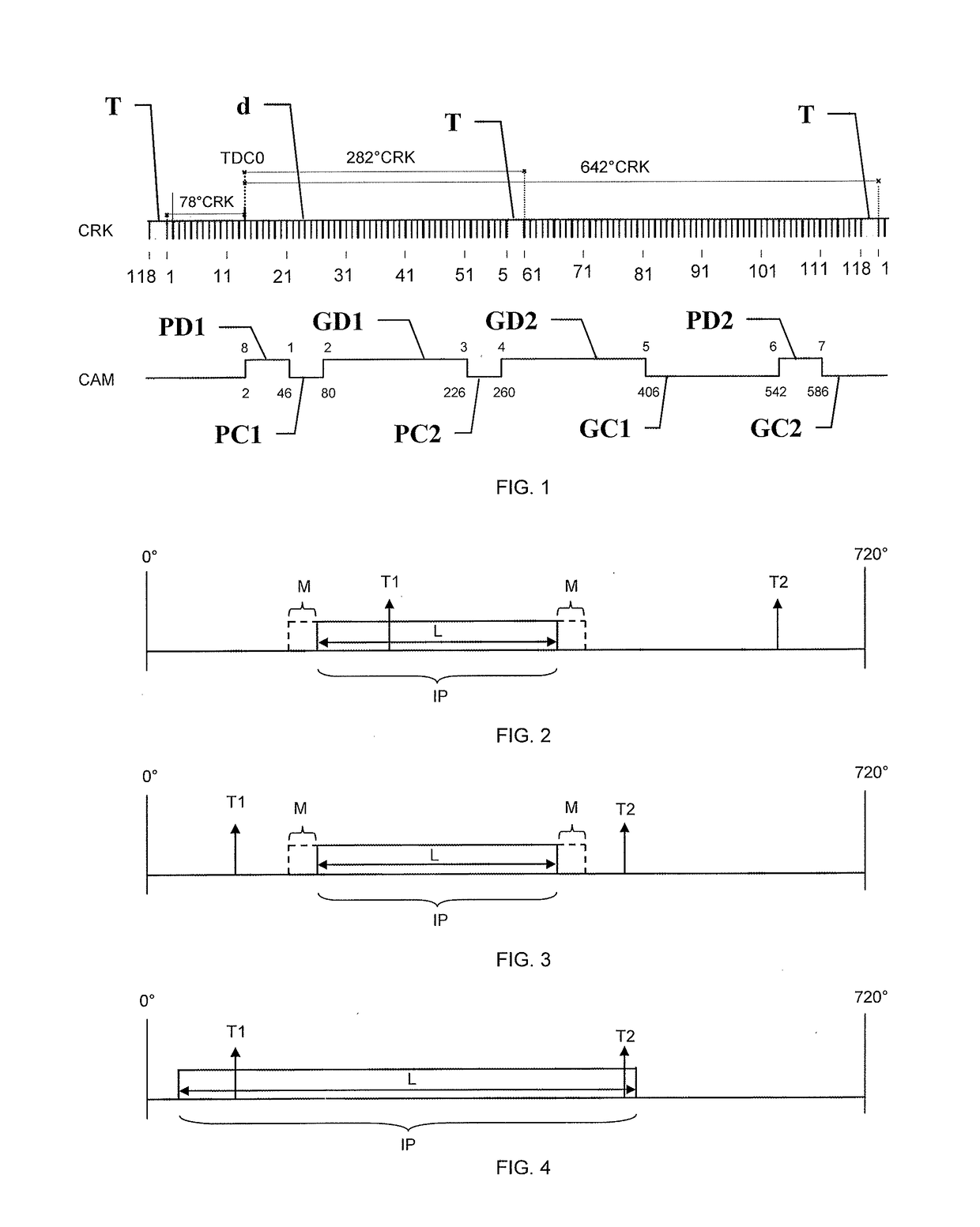Method for precise synchronization of a combustion engine
a technology of combustion engine and synchronization method, which is applied in the direction of combustion engine, electric control, machines/engines, etc., can solve the problem of length of time, and achieve the effect of reducing the distance between the two synchronizations and estimating the intervals faster
- Summary
- Abstract
- Description
- Claims
- Application Information
AI Technical Summary
Benefits of technology
Problems solved by technology
Method used
Image
Examples
first embodiment
[0069] there are two scenarios considered.
[0070]In a first scenario, illustrated in FIG. 2, if exactly one of the determined angular positions T1, T2 belongs to the estimated interval IP, in this case the position T1, then this angular position T1 is deemed to be the angular position of the engine. In this case, the estimated interval IP makes it possible to remove the indeterminacy, keeping just one angular position T1. This angular position T1 is known with precision. Exact synchronization is achieved and the method is finished.
[0071]The advantage of the method in terms of speed may be appreciated here. Specifically, in this favorable case, exact synchronization is achieved as soon as the first “marker” event is received, i.e. very quickly. With a typical crankshaft wheel performing two revolutions and comprising one marker per revolution, such an event occurs on average at 180° CRK, namely at one quarter of an engine cycle, and at the latest, at 360° CRK, namely at one half of an...
second embodiment
[0075] a tolerance margin M, featured in dotted line at the endpoints of the interval IP in FIGS. 2 and 3, is added to the estimated interval IP which is then replaced by the estimated interval IP increased by said tolerance margin M. The comparison is performed in a similar way, drawing the same conclusions.
[0076]The addition of this tolerance margin M, around the estimated interval IP, seeks to take account of the unknown that is the angular timing setting of the variable valve timing device or VVT. This is because this angular timing setting may have an influence on a camshaft event and thus may have modified the estimated interval IP, the determination of which is generally based on one or more camshaft events. So, this tolerance margin M is advantageously equal to a portion of the angular span of a variable-timing device. A preferential value of 75% of the angular span has yielded good results. Thus, for example, for a variable-timing device exhibiting an angular span of 55° CR...
PUM
 Login to View More
Login to View More Abstract
Description
Claims
Application Information
 Login to View More
Login to View More - R&D
- Intellectual Property
- Life Sciences
- Materials
- Tech Scout
- Unparalleled Data Quality
- Higher Quality Content
- 60% Fewer Hallucinations
Browse by: Latest US Patents, China's latest patents, Technical Efficacy Thesaurus, Application Domain, Technology Topic, Popular Technical Reports.
© 2025 PatSnap. All rights reserved.Legal|Privacy policy|Modern Slavery Act Transparency Statement|Sitemap|About US| Contact US: help@patsnap.com

